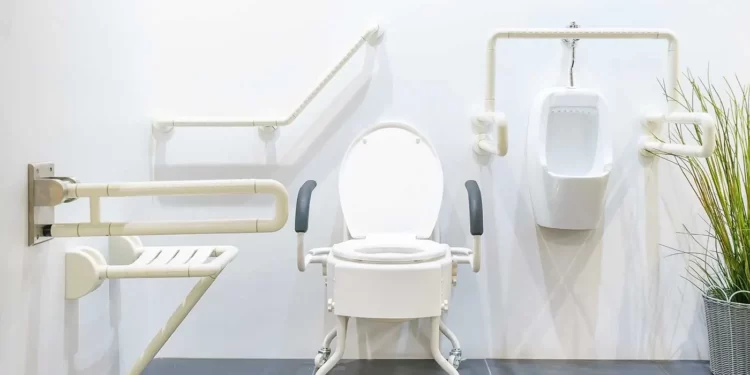The journey towards choosing suitable bathroom equipment for elderly or mobility-challenged individuals is not always straightforward. This becomes evident, especially when safety, comfort, and ease of use are paramount. Among the various options available, the shower commode stands out as a versatile solution. This article dives deep into understanding what one should look for when selecting the right fit for those with mobility issues.
Understanding the Needs
Before diving into the specifics of what to look for, it’s crucial to assess the individual needs of the user. Some individuals might need more support, while others might require specific height or width adjustments. Taking a holistic view of the user’s mobility level and daily routine can guide the selection process more efficiently.
It’s also worth considering the user’s personal preferences and comfort requirements, which can play a significant role in determining the most appropriate option. Furthermore, thinking about the long-term needs, as the user’s condition may change over time, ensures that you’re making a lasting investment.
Features to Priorities
Stability and Sturdiness
The primary concern is always safety. Look for models that offer a stable base and sturdy build. Non-slip feet and hand grips can further ensure that there are minimal risks during use. Quality materials, like stainless steel or reinforced aluminium, can provide both durability and stability.
Adjustability
Not all individuals have the same requirements. Models that come with adjustable heights, armrests, and backrests can cater to a broader range of needs. Being able to fine-tune these settings ensures that the user gets a customized experience, enhancing comfort and safety.
Reading Suggestion: Silent Panic Attacks
Ease of Cleaning
Given its usage, the equipment should be easy to clean and maintain. Look for smooth surfaces and detachable parts that make the cleaning process more straightforward. Hygiene is paramount, and materials that resist bacterial growth can be beneficial.
Weight Capacity
Ensure that the chosen model can handle the weight of the user. While most models come with a standard weight capacity, it’s essential to double-check, especially if the user is on the heavier side. Knowing the weight limit not only ensures safety but also enhances the longevity of the equipment. Overburdening can lead to wear and tear, so always opt for a model that comfortably supports the user’s weight.
Portability and Storage
If there’s limited space or the equipment needs to be moved around, considering its portability and ease of storage is essential. Collapsible or foldable designs might be more suitable in such situations. A lightweight model can further aid in easy transportation, especially if it’s used in different locations. Look for features like quick-release mechanisms or removable parts to aid in compact storage.
The Value of Feedback
While doing research, don’t underestimate the value of feedback and reviews from other users. They can provide real-life insights into the pros and cons of different models. Furthermore, speaking with healthcare professionals can provide expert advice tailored to the specific needs of the individual.
Personal testimonials often highlight potential issues or benefits that are not immediately apparent in product descriptions. Engaging in forums or community groups can also offer a platform to ask questions and get responses from experienced users.
Planning for the Future
It’s wise to think ahead. The needs of the user might change over time – they may even need to learn about senior living from The Chelsea at Brick, and other assisted living facilities, that could potentially offer them the support and care they need if they become unable to manage this themselves.
Opting for a model that can cater to evolving needs ensures longevity and avoids the hassle of frequently changing equipment. Moreover, investing in high-quality equipment might have a higher upfront cost but can be cost-effective in the long run due to its durability and versatility.
Always factor in the potential changes in the user’s health and mobility when making a decision, ensuring the chosen solution remains suitable in the long term.
Conclusion
Choosing the right equipment, like a shower commode, is an essential step towards ensuring the safety and comfort of elderly or mobility-challenged individuals. By remembering the features to prioritise, understanding the user’s needs, and planning for the future, one can make an informed decision that can significantly enhance the quality of life for the user.























